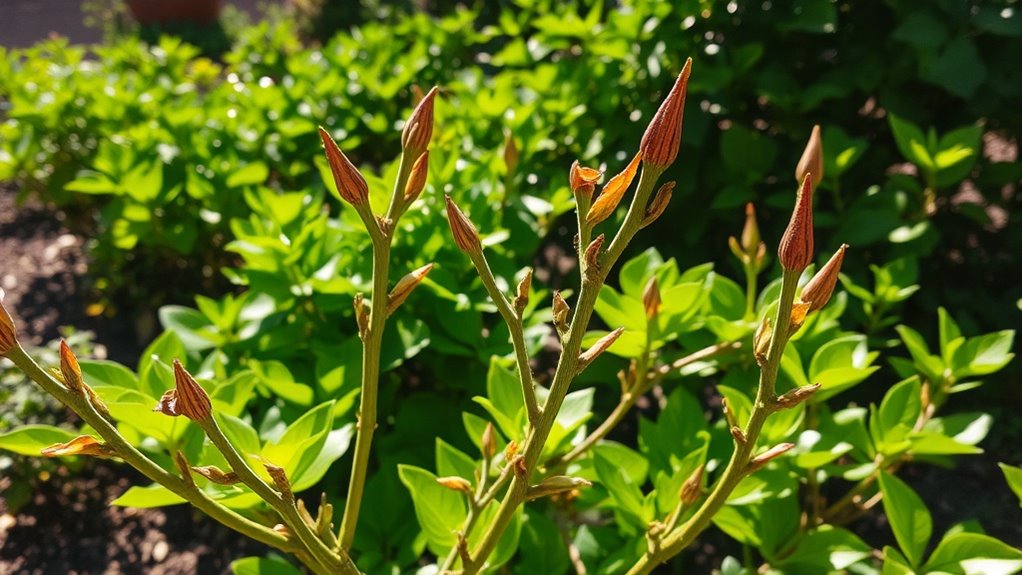Stop Doing This When You Prune – It’s Ruining Your Plants
When you prune, timing is crucial. Cutting at the wrong time can stifle your plants’ growth or even cause long-term damage. You also need the right tools—dull blades can lead to jagged cuts, increasing disease risk. Plus, removing too much foliage all at once can shock your plants. To ensure your plants thrive, it’s essential to understand their unique needs and habits. So, what mistakes should you specifically avoid?
Pruning at the Wrong Time of Year
Pruning at the wrong time of year can have detrimental effects on your plants, leading to stunted growth or even permanent damage.
You might be making pruning mistakes if you cut back during late frost or while plants are actively growing. Always research optimal seasons for each type of plant.
Timing is crucial, so plan your pruning schedule according to specific growth cycles and seasonal changes. Additionally, understanding plant growth cycles can help ensure you are pruning at the ideal times.
Using Dull or Inappropriate Tools
Cutting back plants effectively isn’t just about timing; the tools you use play a significant role as well.
Using dull shears or inappropriate tools can damage your plants and impede healing. Sharp, clean tools ensure precise cuts, minimizing stress on the plant. Additionally, utilizing proper techniques when pruning can further promote healthy plant growth and recovery.
Invest in proper pruners or loppers tailored to your plant’s size and type for optimal results and healthier growth.
Cutting Too Much at Once
When you remove too much foliage or stem at one time, you risk shocking the plant and hindering its growth. This excessive cutting can lead to stress, making it harder for the plant to recover. Instead, prune gradually, taking off no more than a third of the plant at once. This method ensures it remains healthy and encourages new, vigorous growth. Moreover, proper pruning techniques can significantly enhance plant vitality and aesthetics in your garden.
Ignoring Plant Type and Growth Habit
While you might be eager to trim your plants, ignoring their specific type and growth habit can lead to disastrous results.
Different plants require unique pruning techniques, and improper cuts can harm growth.
Remember to consider:
- The season for pruning specific plants.
- Whether they bloom on old or new wood.
- Their natural shape and growth direction.
Understanding these factors is essential for successful pruning. Knowing the right time to prune based on blooming plants can greatly enhance their health and flowering potential.
Neglecting Sanitation Practices
Pruning plants can significantly enhance their health and appearance, but neglecting sanitation practices during this process sets you up for failure.
Always disinfect your tools before and after use to prevent the spread of diseases. Remove any cuttings or debris from the area, as they can harbor pests and pathogens.
Maintaining clean tools and workspace is essential for promoting strong, resilient plants.

